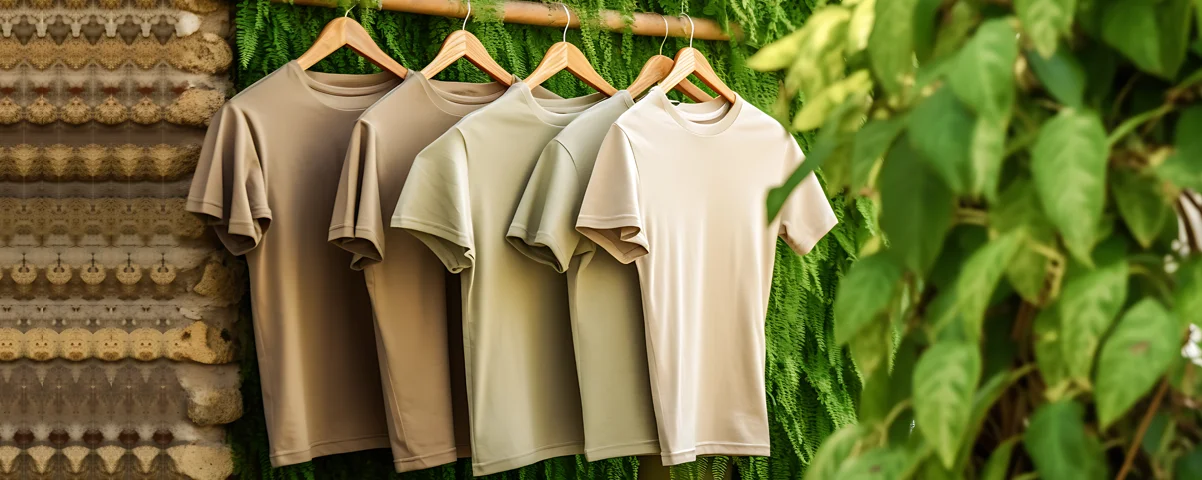Keep Ahead of the Contour by Discovering Ingenious Fashion Trends
In an industry as dynamic as style, staying in advance involves greater than just following current patterns-- it requires an expedition of technology. Smart fabrics, for example, are transforming garments into useful work of arts, while 3D printing is changing layout processes with its customizable, waste-reducing capacities. As sustainability comes to be a foundation, technologies like environmentally friendly materials and round fashion practices are improving ecological responsibility - Cape Town Sustainable Fashion. Furthermore, the convergence of modern technology and style proclaims a new era of customer engagement. Exactly how, then, can these emerging patterns redefine the future of fashion, and what effects do they hold for brands looking for to flourish in this evolving landscape?

Embracing Smart Textiles
In recent years, the fashion business has seen a transformative shift with the combination of clever fabrics, an advanced advancement that mixes technology with fabric. This development represents not only a combination of aesthetics and functionality however likewise a substantial jump towards sustainability and personalization in vogue. Smart textiles, also called e-textiles, embed sophisticated electronics such as sensors and conductive threads within the material, making it possible for garments to engage with the user or the setting.
These fabrics are created to keep an eye on physiological specifications, such as heart rate or body temperature, offering real-time health analytics. Beyond wellness applications, clever fabrics are also being utilized for flexible apparel, which can transform shade or pattern in action to environmental stimulations, hence using a dynamic style experience.
In addition, the growth of energy-harvesting textiles that generate power from activity or sunlight is paving the means for self-sufficient wearable technology. This innovation is appealing to eco mindful customers and developers aiming to lower the environmental footprint of style. As r & d in this area advancement, clever textiles are anticipated to end up being increasingly widespread, improving the landscape of modern style with their multifunctional capabilities.
The Surge of 3D Printing
Transforming the production landscape, 3D printing has arised as a game-changer in the style industry. This innovative technology has actually enabled designers to press the boundaries of creative thinking, creating detailed and customized garments that were formerly inconceivable. By leveraging electronic design and additive manufacturing, 3D printing facilitates the development of complex geometries and patterns, enabling developers to try out brand-new appearances and structures.
A significant benefit of 3D printing in vogue is its capacity to produce on-demand, decreasing waste and minimizing supply requirements. This effectiveness not only maximizes production procedures but likewise permits for quick prototyping, enabling designers to bring their visions to life in a much shorter duration. Furthermore, 3D printing supports personalization to a level unmatched by conventional techniques, providing special designs and customized fits tailored to private consumer choices.
The surge of 3D printing has actually also democratized style, making it accessible to emerging designers that can currently fabricate high-quality pieces without significant financial investment in conventional production facilities. As technology continues to development, the style market is poised to harness the full potential of 3D printing, exploring brand-new products and methods that will certainly redefine how fashion is developed and generated.
Lasting Fashion Developments
As the apparel industry faces the pressing requirement for environmental duty, lasting fashion developments have arised at the leading edge of transformative modification. The expanding recognition of environmental effect has sustained a shift towards even more eco-conscious methods and materials. Developers and brands are now prioritizing sustainability, including techniques that reduce waste and reduce carbon impacts.
One considerable development is the surge of circular fashion, which stresses recycling and upcycling to extend the lifecycle of garments. This technique not explanation only minimizes waste yet likewise encourages consumers to take on a much more conscious strategy to clothes consumption.
Another breakthrough depends on the fostering of cutting-edge dyeing techniques that use waterless processes or natural dyes, thereby minimizing the vast amounts of water and chemicals generally made use of in fabric dyeing. Furthermore, improvements in biotechnology have actually led to the development of lab-grown natural leather and textiles, supplying ecologically pleasant and cruelty-free choices to standard materials. Through these pioneering efforts, the garment industry is making meaningful strides towards a more lasting future.

Tech-Integrated Clothing
Tech-integrated clothing stands for an innovative fusion of style and technology, improving exactly how individuals connect with their garments. This ingenious domain is noted by the inclusion of clever textiles and ingrained electronic components, boosting both performance and aesthetic allure. From physical fitness trackers embedded in sports apparel to heated coats controlled using smart device apps, tech-integrated apparel uses consumers extraordinary ease and versatility.
Pioneering brand names are driving this fad, concentrating on developing garments that react to ecological stimulations or customer commands. For circumstances, some garments can transform color or pattern in response to temperature changes, while others include biometric sensors to check wellness metrics like heart rate or stress levels. The smooth assimilation of modern technology into fabrics likewise includes environmental sustainability, with initiatives to establish self-cleaning materials or garments that adapt to climate condition, hence lessening the need for multiple layers.
In addition, the development of wearable innovation is not just restricted to clothes but includes devices like watches and eyewear, further widening the scope of tech-integrated style. As the market remains to introduce, the capacity for customization and customization in clothing grows, supplying consumers unique, tech-enhanced style experiences that accommodate their specific requirements and preferences.
Future of Virtual Style
In recent years, the future of virtual style has become a transformative force within the sector, leveraging improvements in digital modern technology to redefine exactly how style is developed, experienced, and taken in. By incorporating enhanced reality (AR), digital reality (VIRTUAL REALITY), and 3D design devices, designers can now craft immersive and interactive experiences that go beyond traditional style boundaries. Online fashion enables the development of garments that exist only in electronic atmospheres, supplying limitless opportunities for technology without the limitations of physical manufacturing.
This digital change not just provides chances for imaginative expression however additionally addresses sustainability concerns fundamental in standard style practices. Cape Town Sustainable Fashion. By getting rid of the need for physical resources, digital style reduces waste visit their website and reduces carbon footprints. In addition, the rise of virtual fashion lines up with the raising customer demand for distinct and tailored experiences, as online garments can be personalized i thought about this and tailored to private choices effortlessly

Final Thought
The style sector's future lies in the integration of ingenious modern technologies and lasting techniques. Virtual fashion is poised to redefine customer communications.
In current years, the fashion market has actually seen a transformative change with the assimilation of smart textiles, a cutting-edge development that mixes technology with fabric.As the fashion market grapples with the pressing need for environmental responsibility, lasting fashion advancements have actually emerged at the leading edge of transformative adjustment.In current years, the future of digital style has actually arised as a transformative pressure within the market, leveraging improvements in electronic modern technology to redefine just how style is developed, experienced, and eaten. The surge of digital style aligns with the increasing consumer demand for individualized and special experiences, as online garments can be personalized and tailored to individual choices with simplicity.
The fashion industry's future lies in the combination of sustainable practices and ingenious technologies.